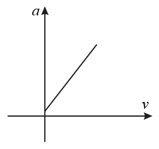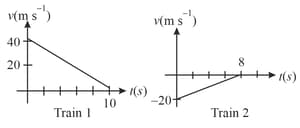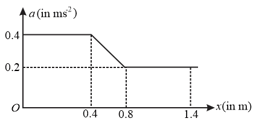Exercises
B M Sharma Physics Solutions for Exercises
Simple step-by-step solutions to Exercises questions of Kinematics I from PHYSICS For Joint Entrance Examination JEE (Advanced) Mechanics I. Also get 3D topic explainers, cheat sheets, and unlimited doubts solving on EMBIBE.
Questions from Exercises with Hints & Solutions
The acceleration vs velocity graph of a particle moving in a straight line is shown in the figure. Then the slope of the velocity vs displacement graph

A particle starts moving rectilinearly at the time such that its velocity changes with time according to the equation , where is in and is in . The time interval for which the particle retards (i.e., magnitude of velocity decreases) is
An object is moving in the plane with the position as a function of time given by . Point is at . The object is definitely moving towards when
An object has velocity w.r.t ground. An observer moving with constant velocity w.r.t ground measures the velocity of the object as . The magnitudes of the three velocities are related by
A man swimming downstream overcomes a float at a point . After travelling distance , he turned back and passed the float at a distance of from the point . Then the ratio of the speed of the swimmer with respect to still water to the speed of the river will be
Two trains which are moving along different tracks in opposite directions are put on the same track due to a mistake. Their drivers on noticing the mistake, start slowing down the trains when the trains are apart. Graphs given in the figure shows their velocities as function of time as the trains slow down. The separation between the trains when both have stopped is

The acceleration of a particle that moves along the positive -axis varies with its position as shown in the figure. If the velocity of the particle is , at , then the velocity of the particle at is (in )

A body is thrown vertically upwards with such a velocity that it reaches a maximum height of . Simultaneously, another body is dropped from height . It strikes the ground and does not rebound. The velocity of relative to versus time graph is best represented by (upward direction is positive)
